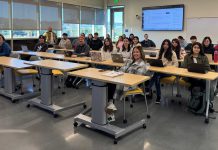GILROY
– New flexibility in the federal government’s education reform
program could make it easier for Gilroy schools to meet student
participation requirements on standardized tests.
GILROY – New flexibility in the federal government’s education reform program could make it easier for Gilroy schools to meet student participation requirements on standardized tests.
The rule that 95 percent of students must take math and English achievement tests will be relaxed this year so that a school can average that rate over three years rather than meet it each year. Also, students who miss tests for medical reasons would not be included in reaching the 95 percent mark.
The change makes it easier for schools across the country to meet federal testing guidelines and avoid sanctions.
Under the current No Child Left Behind Act requirements, “there’s not really any excused or unexcused absence,” said Jacki Horejs, Gilroy Unified School District’s assistant superintendent of educational services.
Gilroy High School was the only school in the district last year that failed to meet the 95 percent participation rate that applies to all students – and all subgroups of students – included in No Child Left Behind.
Fewer than 95 percent of GHS’ total student population, Latino students and English language learners took standardized tests last year.
Horejs said that she thinks the high school will meet the 95 percent threshold this year, although the revision would give the school some leeway if it misses the mark again.
“I think one of the things is just having attention paid to the importance of having all students take those assessments,” she said.
Under the stricter requirement, GHS could have faced sanctions if it failed to test 95 percent of its students this year.
The added flexibility to participation rates is the latest in a series of minor revisions to No Child Left Behind in recent months.
Even this latest change doesn’t address a problem plaguing many schools in California. Parents are allowed to opt their children out of taking standardized tests.
State education officials are pushing for another revision that does not penalize schools when parents opt their children out. The federal system of measuring student performance, “Adequate Yearly Progress,” does not recognize opt-outs and counts them against the school’s participation.
Although opt-outs are allowed from Standardized Testing And Reporting (STAR) assessments, Horejs reiterated that all GUSD students should participate in testing.
“I’m not sure that I want to see, necessarily, students opt out, because I think it’s important for us to see how students are doing so we can gauge as a school district where we are at,” she said.












